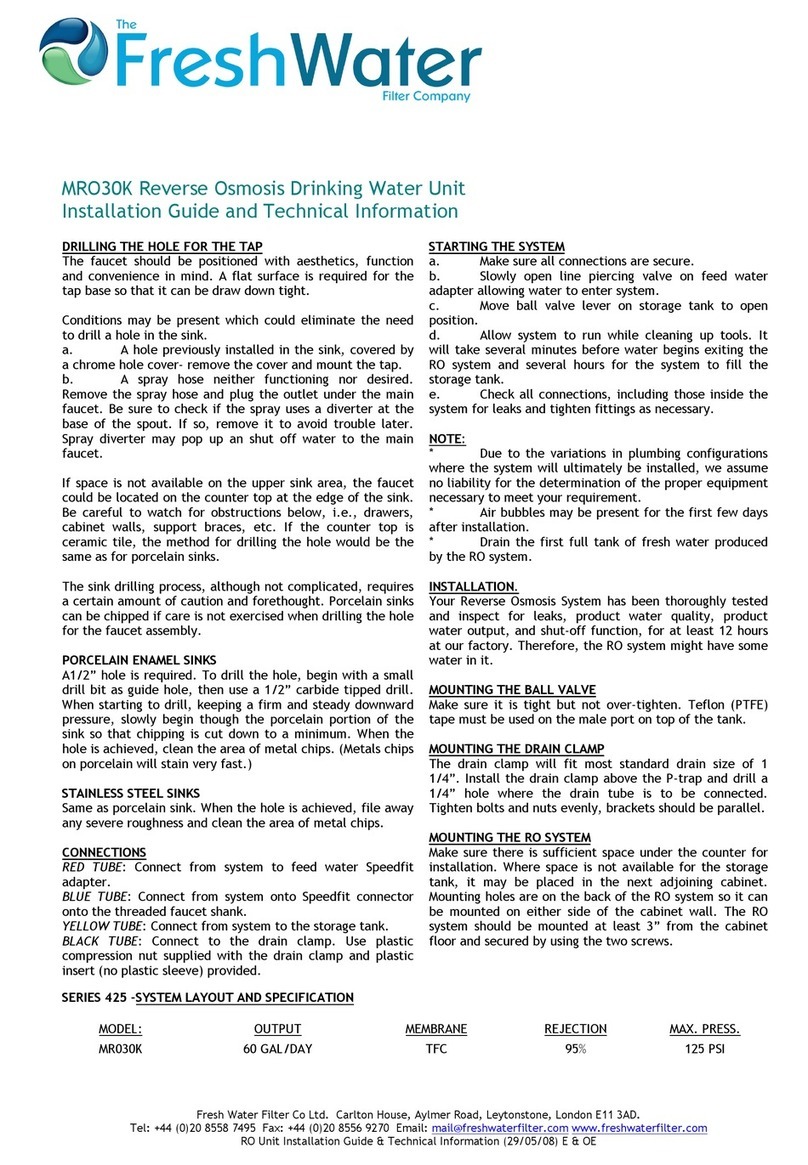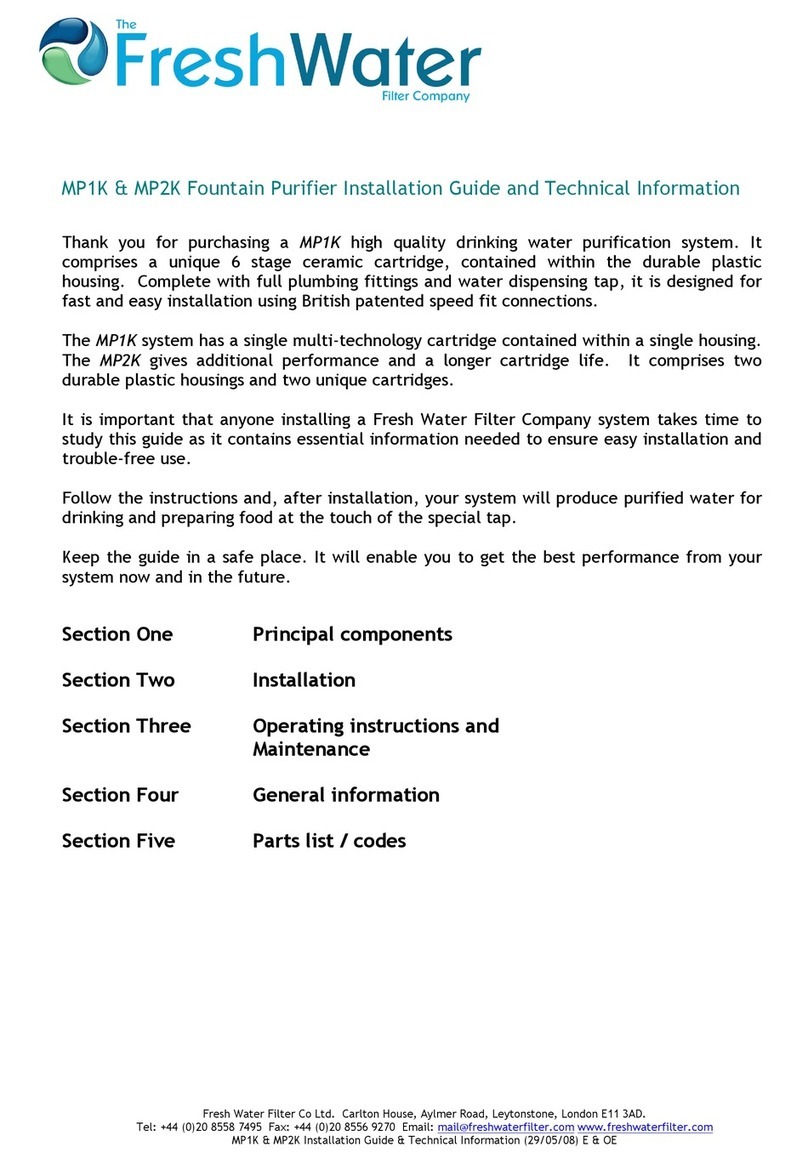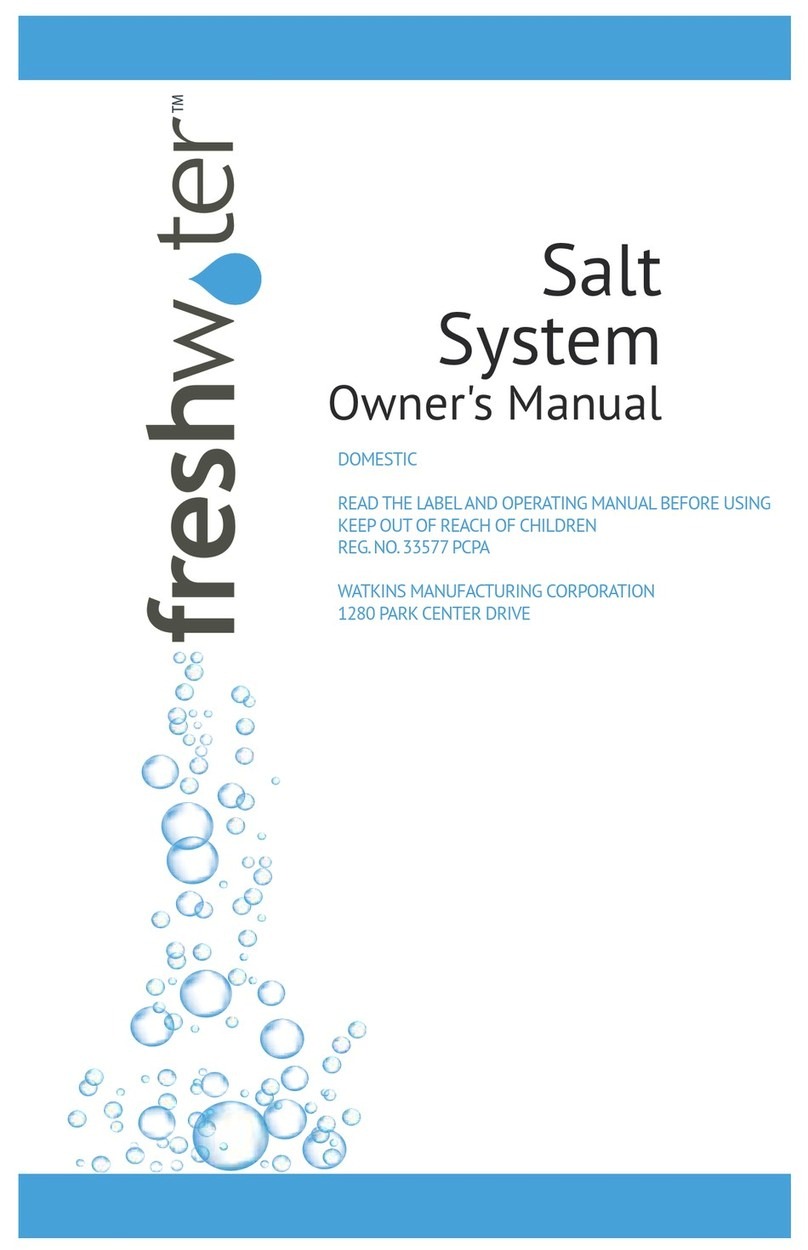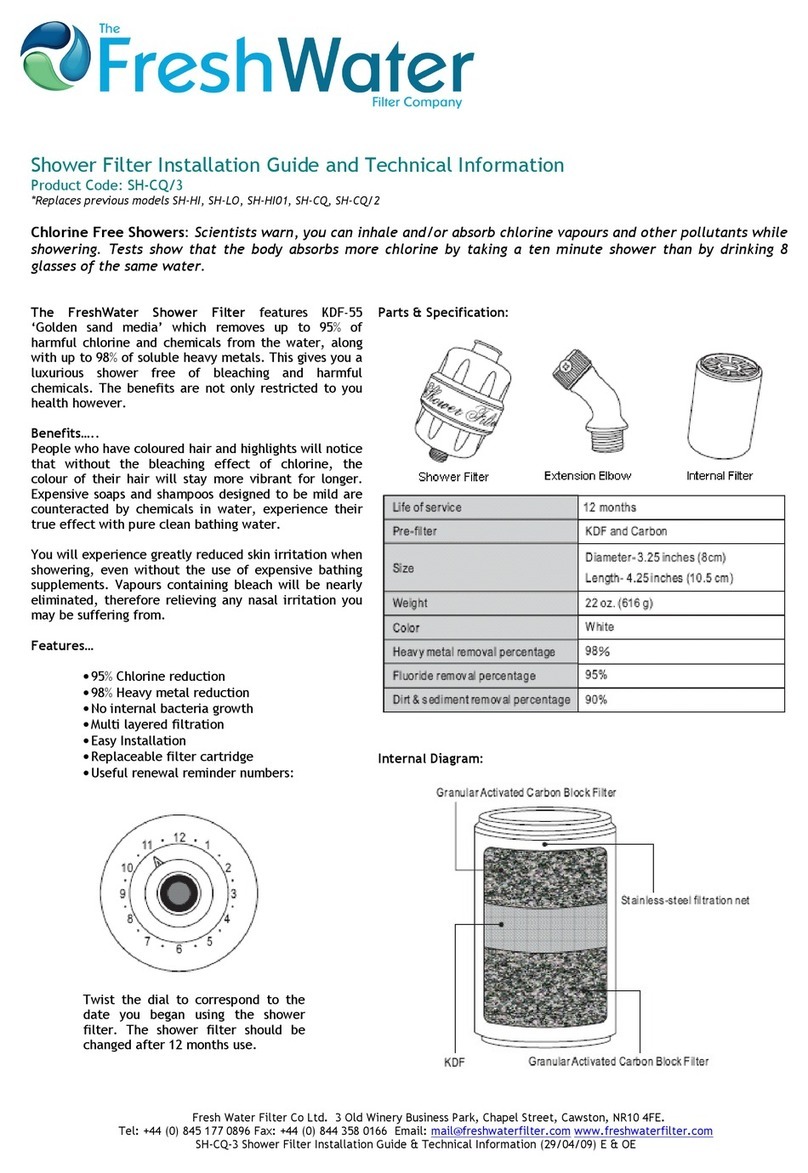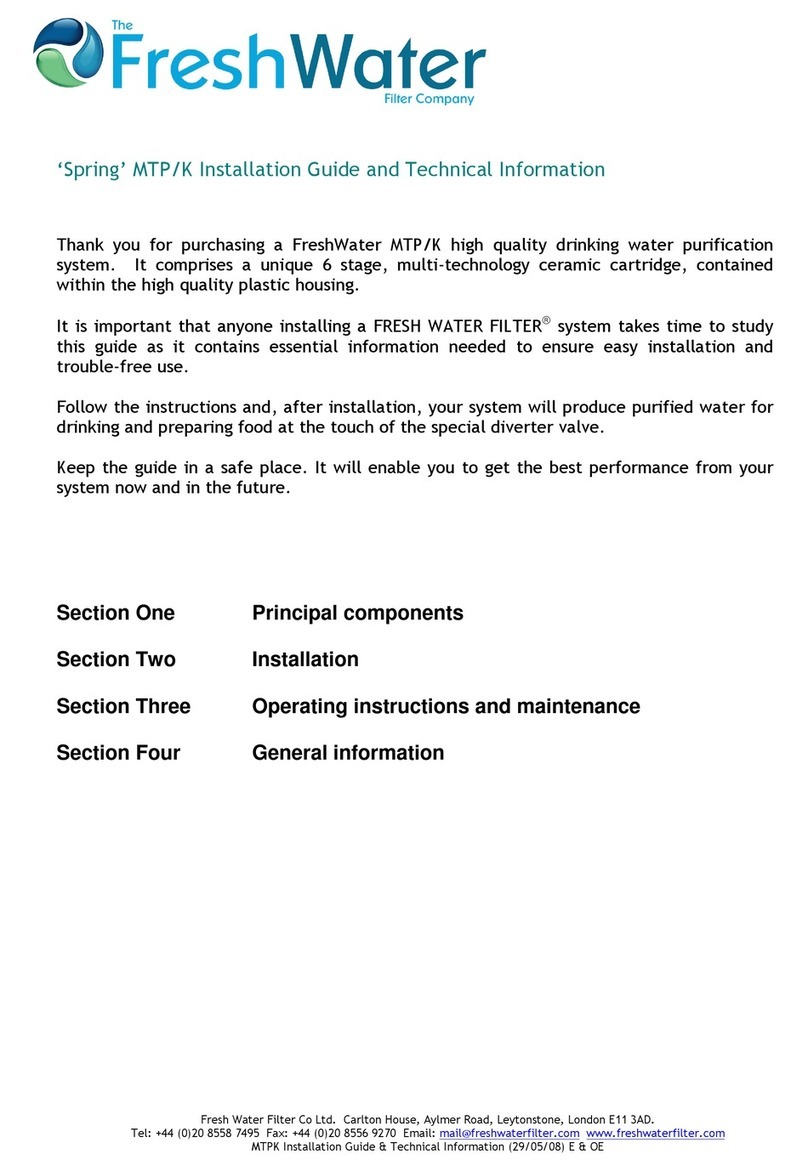Fresh Water Filter Co Ltd. Carlton House, Aylmer Road, Leytonstone, London E11 3AD.
Tel: +44 (0)20 8558 7495 Fax: +44 (0)20 8556 9270 Email: mail@freshwaterfilter.com www.freshwaterfilter.com
FW1000 & FW2000 Installation Guide & Technical Information (29/05/08) E & OE
FW1000 & FW2000 Installation Guide and Technical Information
2.3: High Water Flow
If the water flow has excessive
force, this will lead not only to
splashing at the tap but also to
lower performance from the filter.
Reduce the flow rate to the mini-
mum acceptable by turning the line
piercing valve handle in the clock-
wise direction. For optimum per-
formance we suggest a flow rate of
1.5 litres per minute or less.
2.4: Water Appearance
WHITE water. When a fresh ce-
ramic cartridge is installed or after
cleaning, the water may appear
milky or white for a while. It is
quite harmless and will soon clear.
White water is due to micro bub-
bles of air. On standing, the water
will become clear as the bubbles
move upwards. Water in some
areas of the country is more prone
to this than others.
BLACK water. On setting up your
system after cleaning or if it is dis-
turbed for any reason, very fine
black particles may occur in the
water. Again this is quite normal
and the particles are harmless car-
bon. Flushing the system for a few
minutes by turning the tap on and
off rapidly several times will help
to clear this.
COLOURED water (often RED).
Water in some areas may be high in
dissolved iron and this can pass
through the filter. When the water
is left to stand, dissolved iron gives
a red or brown colour as the iron
oxidises (rusts). In very severe
cases you should contact the manu-
facturer for specialist advice.
Ordinary particulate rust in the
water will be removed by the
system.
2.5: Water Taste
To the palates of most people, fil-
tered and treated water tastes so
much better than unfiltered water.
There are also some people who
cannot detect any change. Others
find that the treated water tastes
“different”, but they will soon be-
come accustomed to the taste of
the purer water.
A major factor affecting taste may
be the natural composition in a
particular area. There can be con-
siderable local differences in the
mineral content of the water for
example. The ‘natural’ taste of an
area’s water is often masked by the
presence of chlorine used in the
treatment process. If the chlorine
taste consistently reappears, the
cartridge should be replaced.
If, after prolonged standing or dur-
ing infrequent use any strong ob-
jectionable taste occurs, flush the
system by running water for 5 min-
utes and if the taste persists carry
out the sanitising process (see Sec-
tion Three, Steps 2,7).
Note that during the disinfection
process chlorine will be generated
and this will taint the water. Flush
the system adequately to remove
this.
2.6: Water Leaks
Your system has been individually
pressure tested before leaving the
factory. In the unlikely event of a
fault, small leaks sometimes do
occur as a result of incorrect as-
sembly or abuse. The following tips
may be helpful:
A.) Depending on the positioning
of the filter and the temperature
of the incoming water and air, con-
densation on the outside of the
filter housing may occur, resulting
in a frosted appearance of fine
water droplets on the stainless
steel surface. This does not of
course mean that there is a leak in
the system. The remedy is to ei-
ther insulate the area around the
filter, or reposition it.
B.) Always ensure that the ‘O’
seals and the areas in which they
are located are clean. Any small
piece of debris on the seal of the
surrounding area could cause a
small leak. Apply a smear of petro-
leum jelly to the seal.
C.) Always ensure that the filter
housing is screwed fully onto the
headworks. This is essential both
for the internal seal and the hous-
ing seal.
D.) In the event of a leak carefully
examine its source. Water from a
leak may run along the pipe work -
it may drip, or collect, some dis-
tance from the actual position of
the leak.
E.) When the leak is found, if it is
an ‘O’ seal first clean the seal and
the surrounding area and reassem-
ble with a smear of silicone grease
or white petroleum jelly. If this
does not solve the problem fit a
replacement seal.
F.) Leaks occurring at the line
piercing valve may mean that the
unit has not been fully clamped
onto the water line - please adhere
to the instructions given in Section
Two, Step 4.
G.) Leaks at the speed fit connec-
tors are usually due to the tubing
not being pushed fully into the fit-
ting. Remove the tubing, cut off
an inch of tubing with a sharp knife
and reinsert into the speed fit con-
nector. Ensure that the speed fit
collet is in position. When fitted
correctly, the tube should not pull
out of the fitting (unless the collet
is pushed in at the same time to
release the tubing).
H.) Leaks from the bottom of the
dispensing tap could be due to in-
correct installation. Make sure that
the components are fitted correctly
and that the compression nuts are
fully tightened. Be certain to check
the small white washer seal in the
adapter.












